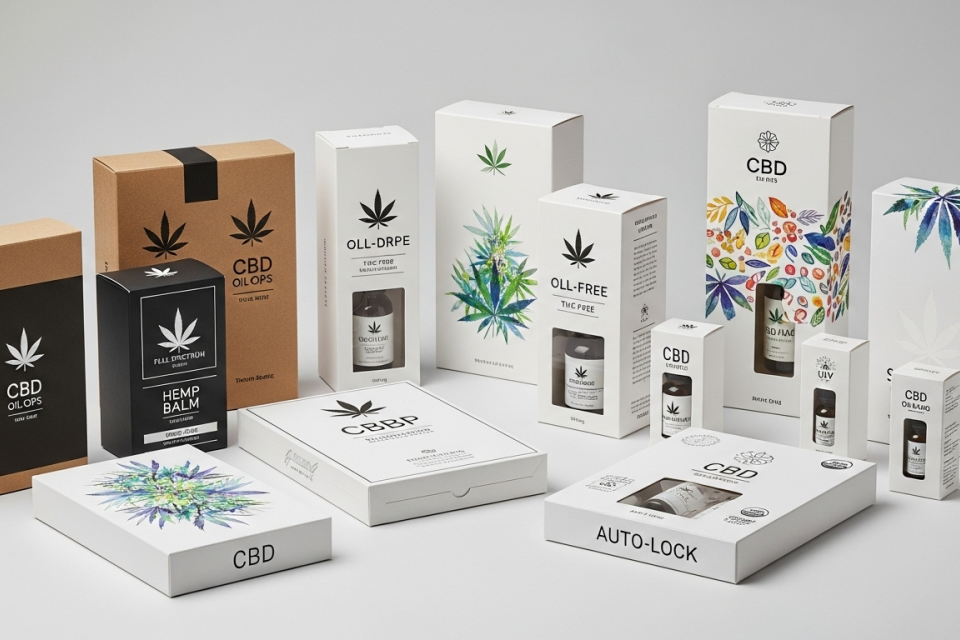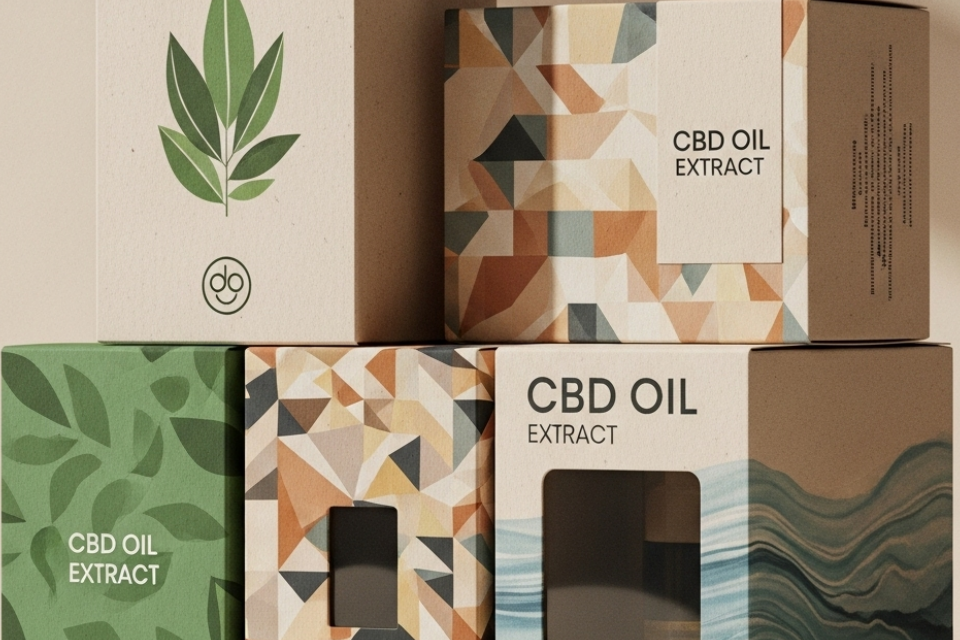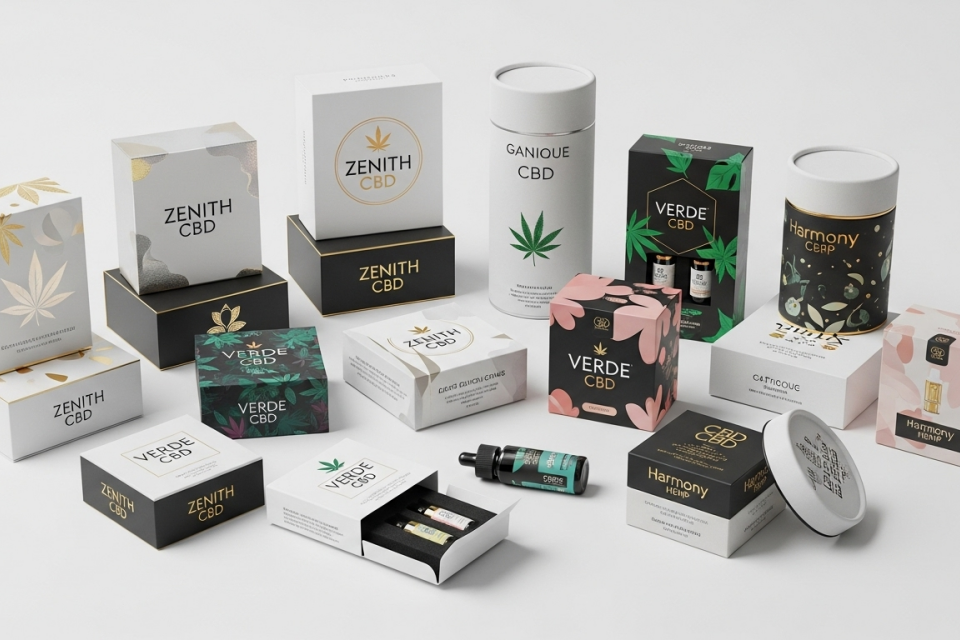Child-Resistant Options for CBD Oils
Explore child-resistant options for CBD oil. This guide covers legal frameworks, packaging types, best practices, and recent sustainable innovations.
Summary
Child-resistant options for CBD oils are specialized packaging solutions designed to prevent accidental ingestion by young children while ensuring ease of use for adults. As the use of CBD products has surged in popularity, particularly among health-conscious consumers, the necessity for such protective measures has become increasingly prominent due to safety concerns. The ongoing evolution of regulations and consumer awareness surrounding CBD oils has heightened the focus on packaging safety, prompting manufacturers to adopt child-resistant designs that comply with legal requirements while promoting responsible consumption.
The legal framework governing child-resistant packaging for CBD oils varies across jurisdictions, with notable differences between countries like Canada and the United States. In Canada, the Cannabis Act mandates child-resistant packaging as part of its comprehensive regulation of cannabis products, including CBD oils, to safeguard public health and minimize access by minors. Conversely, in the United States, the regulatory landscape is fragmented, with individual states enacting their own requirements for child-resistant packaging, thereby creating a patchwork of compliance standards. These regulations aim to balance safety with market adaptability, resulting in diverse packaging solutions such as POP VAC jars, Mylar bags, and tubes that incorporate advanced child-resistant mechanisms.
Despite advancements in design, the effectiveness of child-resistant packaging remains a contentious topic. Research indicates that while such mechanisms can delay access to CBD oils for young children, they are not foolproof. Concerns have been raised regarding “false affordances,” where packaging appears user-friendly but is challenging for children to manipulate. Furthermore, the complexity of these mechanisms can inadvertently complicate access for adults, particularly those with disabilities, underscoring the need for ongoing innovation and collaboration among manufacturers, regulators, and consumers to enhance both safety and usability.
In light of these challenges, the industry is witnessing a trend toward integrating smart technologies and sustainable materials into child-resistant packaging designs. Innovations such as smart sensors and recyclable materials aim to improve safety and environmental impact while meeting the growing consumer demand for responsible packaging solutions. By addressing the dual objectives of child safety and adult accessibility, manufacturers are striving to create packaging that not only complies with legal standards but also fosters a culture of safety and awareness around CBD products.
Table of Contents
Legal Framework
The legal landscape surrounding child-resistant options for CBD oils is influenced by various regulatory frameworks that govern cannabis products. In Canada, the Cannabis Act, which came into force on October 17, 2018, established a comprehensive legal framework for the production, distribution, sale, and possession of cannabis, including CBD products. The Act aims to protect public health and safety, particularly focusing on minimizing access to cannabis by young persons under the age of 18.
In the United States, while cannabis remains illegal federally, many states have enacted their own laws permitting the use of cannabis for medical and non-medical purposes. This has resulted in a patchwork of regulations, with some states requiring child-resistant packaging for all cannabis products, including CBD oils, to prevent accidental ingestion by children.
The regulatory requirements for packaging, including child-resistant options, are also addressed by Health Canada. Proposed amendments to the Cannabis Regulations seek to streamline packaging and labeling requirements, which could include considerations for child-resistant features to ensure safety while promoting compliance and reducing barriers for licensed producers. The emphasis on public health and safety underscores the necessity for robust packaging standards, including child-resistant options, to mitigate risks associated with cannabis consumption by children.
Moreover, the recommendations from independent panels and expert reviews highlight the ongoing need to balance regulatory efficiency with safety measures. This is evident in discussions surrounding the use of transparent packaging and QR codes for product identification, which aim to maintain safety standards without overburdening producers. Thus, the legal framework for CBD oils, particularly regarding child-resistant options, reflects a complex interplay of safety mandates and regulatory adaptation in response to evolving market conditions.

Types of Child-Resistant Packaging
Child-resistant packaging is essential in reducing the risk of accidental ingestion of harmful substances by children, particularly in the context of CBD oils. There are various types of child-resistant packaging designed to ensure safety through specific mechanisms that are difficult for children under five years of age to open.
Common Types
POP VAC Jars
POP VAC jars are designed with child-resistant features that make it challenging for young children to access the contents. These jars often utilize push-and-turn mechanisms or twist-lock closures, which require adults to apply specific actions to open them, while remaining inaccessible to children.
Child-Resistant Mylar Bags
Child-resistant Mylar bags are another popular option, especially for products like CBD oils. These bags often feature press-to-close zippers or similar mechanisms that require dexterity to open, making them difficult for children but easy for adults.
Child-Resistant Tubes
These tubes are designed to contain single-use doses of CBD oils and often employ safety locks or complex opening patterns. Such features limit the ability of young children to access the product, providing an extra layer of safety.
Child-Resistant Boxes
Child-resistant boxes may include safety locks that require an exact sequence to open, further enhancing child safety. Many of these boxes incorporate features such as press locks, which young children typically do not understand, making them effective for safeguarding potentially harmful contents.
Packaging Mechanisms
Child-resistant packaging employs several mechanisms that complicate access for children while remaining user-friendly for adults.
Squeeze-and-Turn Caps: These caps require users to squeeze the sides while turning, making them particularly difficult for young children to manipulate.
Push-and-Turn Mechanisms: This design necessitates pushing down on certain areas while rotating, creating a false affordance that appears simple to open but demands coordination beyond the capabilities of young children.
Snap Caps: Snap caps require pressing in specific locations while twisting or lifting, presenting multiple points of failure for children attempting unauthorized access.
Flexible Packaging Films: Some child-resistant options utilize durable films that provide high barrier properties, ensuring the contents remain fresh and secure while also featuring zippers that demand specific actions to open.
In addition to child-resistant features, many packaging solutions also include tamper-evident characteristics, reassuring consumers about the integrity of the product. The selection of appropriate child-resistant packaging is not only a regulatory requirement but also a significant factor in promoting safety in households with young children.

Effectiveness of Child-Resistant Packaging
Child-resistant packaging is an essential measure designed to prevent young children, particularly those under five years of age, from accessing potentially harmful substances, including CBD oils. The effectiveness of this type of packaging is grounded in its ability to create barriers that significantly delay access, thereby reducing the risk of accidental ingestion. However, it is important to note that while such packaging is designed to be challenging for children to open, it is not completely childproof.
Mechanisms and Design
The design of child-resistant packaging employs a variety of mechanisms aimed at thwarting curious children. Common features include push-and-turn caps, squeeze-and-pull tabs, and slide-and-lock pouches. These mechanisms require a level of dexterity and understanding that children under five typically do not possess, making it considerably difficult for them to open these packages within a reasonable time frame. Regulatory bodies, such as the Consumer Product Safety Commission (CPSC) in the United States, have established stringent standards and testing procedures to ensure that packaging is certified as child-resistant.
Importance of Adult Supervision
While child-resistant packaging serves as a critical first line of defense, it is essential to recognize that adult supervision remains crucial. The primary aim of such packaging is to create an additional barrier to prevent accidental poisoning, which has been a significant concern in cases of medication and product exposure among children. The effectiveness of these packages lies in the fact that they can delay a child’s access to harmful substances long enough for an adult to intervene, highlighting the importance of supervision alongside the use of child-resistant features.
Trends and Consumer Awareness
Recent trends indicate a growing consumer awareness regarding child-resistant packaging, particularly in the context of CBD oils. Many consumers are actively seeking products that not only ensure child safety but also offer features that promote responsible consumption. This awareness is leading to a shift towards packaging that balances safety with usability, considering the needs of both children and adults, particularly those with disabilities or the elderly who may require easier access to medications or other products.

Best Practices for Manufacturers
Navigating Regulatory Compliance
Manufacturers of child-resistant packaging (CRP) for CBD oils face significant challenges due to the constantly evolving regulatory landscape. To ensure compliance, it is crucial for producers to adopt a multifaceted approach. This includes staying proactively informed about regulatory changes, investing in compliance software, and engaging with regulatory consultants to navigate complex regulations effectively.
Additionally, educating and training staff on compliance requirements is essential to maintaining high standards within the organization. The implementation of modular labeling systems can also enhance efficiency while meeting the necessary regulatory specifications.
Balancing Cost and Quality
Striking a balance between cost-effectiveness and compliance is a tightrope walk for many manufacturers. High-quality packaging is vital, especially for smaller producers who may have limited resources. Manufacturers should invest in high-efficiency packaging machinery and consider standardized packaging designs to minimize costs without compromising quality. Lean inventory management strategies can further streamline operations, making it easier to maintain compliance without incurring unnecessary expenses.
Prioritizing Safety and Usability
Safety is a paramount concern in the development of CRP for CBD oils. Manufacturers must prioritize the use of child-resistant mechanisms that not only deter young children but also remain user-friendly for adults, particularly seniors. This involves selecting appropriate systems and thoroughly testing them for both effectiveness and ease of use. The testing protocols should align with industry standards, such as ASTM D3475, ensuring that a significant percentage of adult participants can easily open and reclose the packaging without compromising its child-resistant properties.
Sustainable Practices
In addition to functionality and compliance, manufacturers should consider sustainability in their packaging solutions. Offering recyclable and compostable materials not only aligns with growing consumer demand for eco-friendly options but also enhances brand reputation. Expert guidance can assist manufacturers in designing packaging that meets regulatory standards while reflecting their commitment to sustainability.
By following these best practices, manufacturers can effectively navigate the complexities of child-resistant packaging for CBD oils, ensuring safety, compliance, and market competitiveness.

Challenges and Criticisms
Despite the advancements in child-resistant packaging for CBD oils, several challenges and criticisms persist regarding their effectiveness and design.
Effectiveness of Child-Resistant Mechanisms
The most common child-resistant mechanisms, such as squeeze-and-turn caps and push-and-turn designs, aim to create barriers to access for young children. However, these designs can sometimes produce “false affordances,” where the closure appears easy to open but requires coordination beyond typical child capabilities. Studies indicate that children in this age group struggle with multi-step processes and lack the necessary problem-solving skills to navigate complex mechanisms, leading to concerns about their actual effectiveness in preventing accidental ingestion.
Developmental Limitations of Children
The reliance on child-resistant packaging hinges on the developmental limitations of young children, who generally cannot perform simultaneous actions requiring coordination, such as squeezing and turning a cap. Additionally, their limited fine motor control and hand strength complicate their ability to manipulate mechanisms that demand precise grip or pressure, raising questions about the sufficiency of existing packaging solutions.
Balancing Safety and Accessibility
A significant challenge lies in balancing child safety with adult accessibility. As packaging becomes more sophisticated in its child-resistant features, there is a risk of making it overly complicated for adults to use as well. This dual focus necessitates continuous innovation and collaboration among regulators, manufacturers, health care professionals, and families to ensure that safety measures are both effective and user-friendly. Critics argue that the complexity required for child safety often detracts from the overall user experience for adults, which may lead to non-compliance and ultimately compromise safety.
Regulatory and Industry Feedback
The feedback from industry stakeholders has highlighted the need for clearer guidelines on child-resistant packaging requirements. Many industry members express that current regulations are not adequately aligned with practical manufacturing capabilities, leading to ambiguity and inconsistency in product safety standards. This lack of clarity can hinder compliance efforts and increase the risk of products entering the market without adequate child-resistant features.
Recent Trends and Innovations
Competitive Dynamics in Child-Resistant Packaging
The landscape of child-resistant packaging for CBD oils is significantly influenced by various competitive dynamics. Technological advancements, regulatory compliance, and the increasing demand for sustainable packaging solutions are at the forefront of these changes. Companies are increasingly focusing on customer-centric solutions and compliance with evolving safety regulations to capture market share in this rapidly growing sector. For instance, Accredo Packaging and Fresh-Lock have innovated a flexible stand-up pouch incorporating over 50 by weight of post-consumer recycled material, along with a child-resistant zipper closure, exemplifying a commitment to both safety and sustainability.
Integration of Smart Technologies
The integration of smart technologies into packaging solutions represents a significant trend in the industry. Advanced child-resistant packaging designs now include smart sensors that can monitor package status, providing alerts when containers are improperly closed or accessed at unusual times. Additionally, digital integration through smartphone applications can assist users in understanding proper opening and closing procedures while offering crucial safety information. These innovations enhance user safety and improve overall usability, addressing the needs of various consumer demographics.
Sustainable and Efficient Designs
Sustainability concerns are driving innovations in child-resistant packaging materials and designs. The trend is moving towards mono-material designs that maintain child resistance while improving end-of-life disposal options. Innovations in design also emphasize resource efficiency and waste reduction. Lightweight and minimalist packaging not only reduces material consumption but also decreases transportation emissions, thus enhancing the product-to-package ratio. Furthermore, the use of recyclable and reusable packaging options, such as glass jars and metal tins, fosters closed-loop systems that mitigate environmental impact and conserve resources.
Balancing Safety and Accessibility
A fundamental challenge in the design of child-resistant packaging is balancing safety mechanisms with user accessibility. Traditional child-resistant features can create barriers for elderly users or individuals with dexterity limitations. In response, the industry is developing “senior-friendly” child-resistant packaging, which aims to optimize both safety and accessibility. This approach seeks to cater to a wider demographic while maintaining compliance with safety standards.
